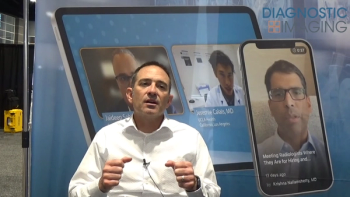
Employing AI in Detecting Subdural Hematomas on Head CTs: An Interview with Jeremy Heit, MD, PhD
In a video interview from the International Stroke Conference (ISC), Jeremy Heit, M.D., Ph.D., discussed new research revealing over 90 percent sensitivity and specificity rates for AI detection of subdural hematomas on non-contrast-enhanced head CTs.
For busy neuroradiology departments, adjunctive artificial intelligence (AI) may facilitate timely detection and triage of computed tomography (CT) scans showing subdural hematomas (SDHs).
In a new retrospective multicenter study presented at the International Stroke Conference (ISC), researchers compared the AI-powered Rapid SDH (RapidAI) software versus three expert neuroradiologist assessments of non-contrast-enhanced head CTs in 313 patients (mean age of 63) for the detection of SDH.
The researchers found that the AI software provided a 92.4 percent sensitivity and a 98.7 percent specificity for subdural hematomas. Specifically, the Rapid SDH software offered a 91.5 percent sensitivity for chronic SDH and a 92.7 percent sensitivity for acute/subacute SDH, according to the research.
In a recent interview from the ISC, lead study author Jeremy Heit, M.D., Ph.D., spoke about the potential impact of the research.
“Those are really good numbers. This is a hard problem, and as one of the readers, some of these hemorrhages were really subtle,” noted Dr. Heit, the chief of neuroimaging and neurointervention at the Stanford University School of Medicine. “So the fact that they're being picked up, I actually think that's really impressive because it's not a trivial task for a computer to be able to deal with.”
Bringing up an example of multiple traumas requiring a number of acute imaging scans in an emergency department, Dr. Heit said the accuracy and efficiency of the Rapid SDH software can have a significant impact in triaging important cases.
“I think it's really going to be helpful to have it work that quickly. It's a three-minute processing (time) to be able to flag something and bump it up on your queue. That is super helpful,” maintained Dr. Heit.
(Editor’s note: For related content, see “
For more insights from Dr. Heit, watch the video below.
Reference
1. Heit J. Performance of Rapid SDH for detection of both acute and chronic subdural hematomas. Presented at the International Stroke Conference, February 4-7, 2025, Los Angeles. For more info, visit
Newsletter
Stay at the forefront of radiology with the Diagnostic Imaging newsletter, delivering the latest news, clinical insights, and imaging advancements for today’s radiologists.




























